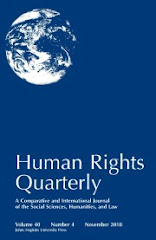With the VCLT, the 2001 ILC Articles, and the practice and judicial decisions applying them firmly in place, with rare exceptions there would be little added value in going back to domestic analogies to derive general principles that could have direct and significant legal impact on the law of treaties. Consequently, the perspective adopted in the chapter has to be necessarily more modest than that adopted by Triepel, Lauterpacht, and McNair in the first third of the last century. It is limited to reflecting upon, rather than deriving legal effects from the comparison of how domestic and international legal orders deal with similar challenges. The admissibility of arguments about analogy depends upon certain assumptions about the nature of domestic and international legal orders. The present chapter is consciously ambivalent about the underlying premises, evaluating the possibilities of comparison of particular rules of the law of treaties and treaty law with particular rules of domestic law from perspectives that are based on different assumptions about the relationship. The chapter will also not define ‘contract,’ ‘statute,’ ‘consideration,’ or other terms denoting particular instruments in domestic law, nor will it engage in any detailed discussion of approaches in particular domestic legal systems. In the contemporary international legal order, positively structured along the lines of the VCLT and the 2001 ILC Articles, it is (no longer) terribly exciting to inquire whether international rules trail the finer print of Roman, English, Soviet, or Chinese law, or Sharia. Such an exercise is in any event unlikely to be very illuminating to a legal inquiry about particular rules and structures. The following debate is instead conducted through loose abstractions of concepts of domestic law, seeking to capture the broadest variety of aspects of international legal reasoning that might be illuminated by typical or even atypical aspects of form and content of domestic legal constructs, without sinking into minutiae of their fine print. The overall thesis is that a tension may exist between analogies from domestic contractual law, derived chiefly from the consensual form of treaties but also the traditional bilateralism and reciprocity of their content, and analogies from types of public law, derived from the increased multilateralism of obligations in the post-War regimes of international law.
Tuesday, December 10, 2013
Paparinskis: Regulating Treaties: A Comparative Perspective
Martins Paparinskis (University College London - Law) has posted Regulating Treaties: A Comparative Perspective
(in
Research Handbook on the Law of Treaties, Christian Tams, Antonios Tzanakopoulos, & Andreas Zimmermann eds., forthcoming). Here's the abstract:





